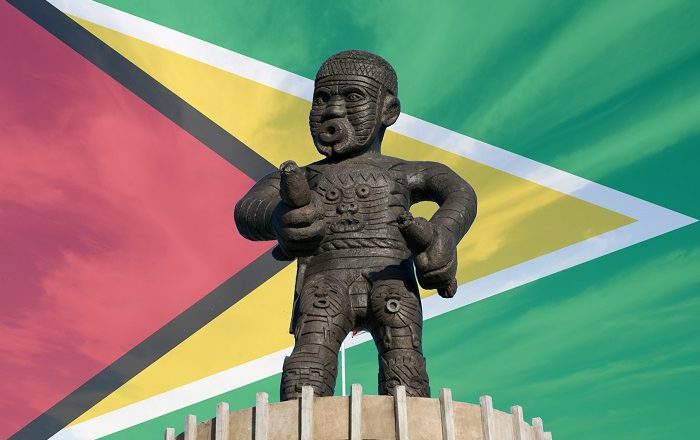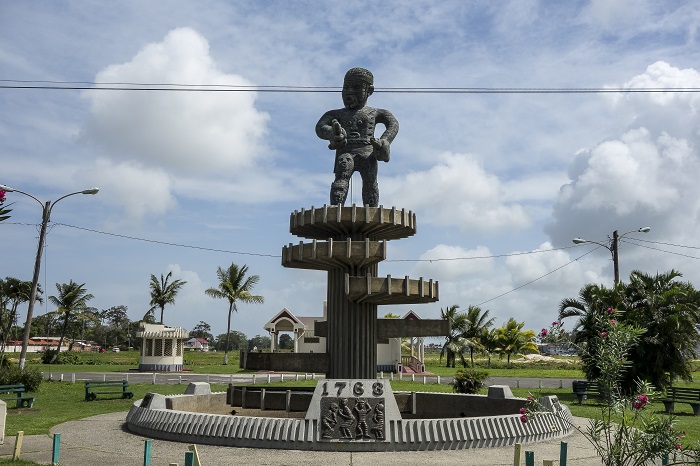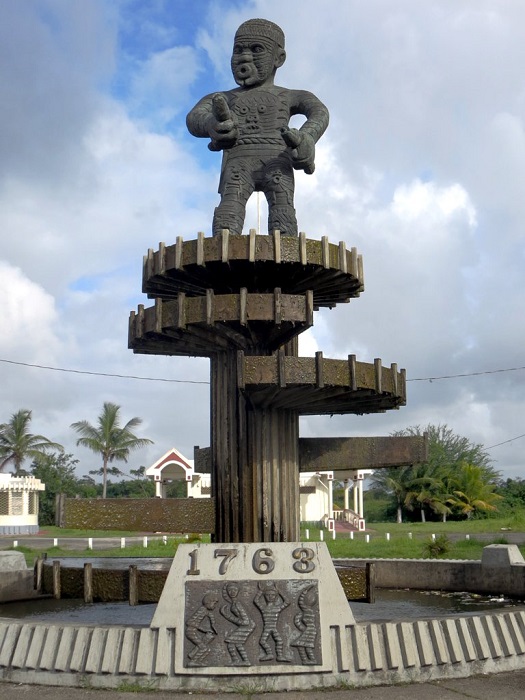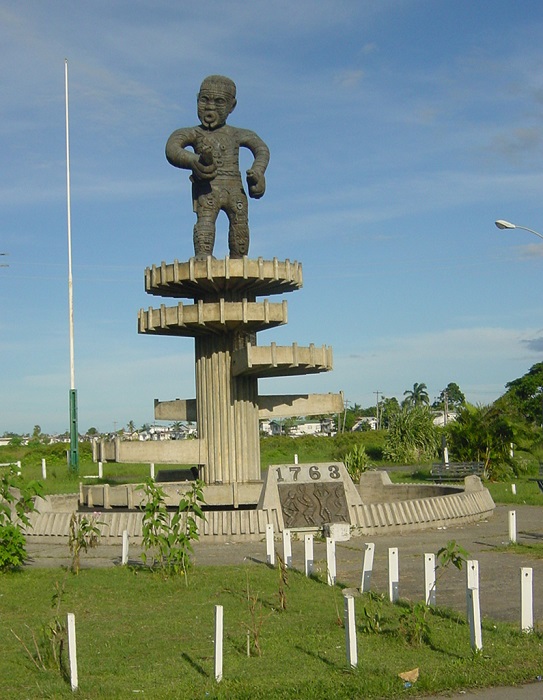The 1763 Monument, sometimes referred to as the Cuffy monument, is a commemorative monument that is located in D’Urban Park in the central area of Georgetown, the capital and largest city of the Co-operative Republic of Guyana. Located more precisely at the eastern end of Brickdam on Vlissengen Road, the 1763 Monument is considered to be a national monument that is dedicated to the memory of Cuffy, an Akan man sold into slavery. The interesting monument was unveiled in 1976, three days before the 10th anniversary of the Guyanese Independence, and as it celebrates the Guyanese anti-colonial struggle, resistance against, and eventual emancipation from slavery, it simply symbolizes the Berbice Slave Rebellion of 1763, a major event in Guyana’s anti-colonial struggles.
At that time, there were some 350 white colonists, 250 enslaved indigenous people, and almost 4,000 black enslaved people. The rebellion occurred on the Magdelenenburg plantation in Berbice, on the upper Canje River, and was owned by Madam Vernesobre. As this is considered to be the first true attempt by slaves to fight for their freedom in an organized fashion, the household slave named Cuffy quickly assumed the leading role in the rebellion and he organized several riots against plantation owners. Even though in the end the rebellion was unsuccessful, during the one year that it lasted, it made a significant impact on the Dutch colonial rulers.
Cuffy proved himself to be a great leader who trained and organized well the enslaved people, but due to his appointment of a man named Akara as his deputy, some internal conflicts lead to an unsuccessful rebellion. Still, Cuffy became a symbol of struggle and a great leader that was remembered for centuries.
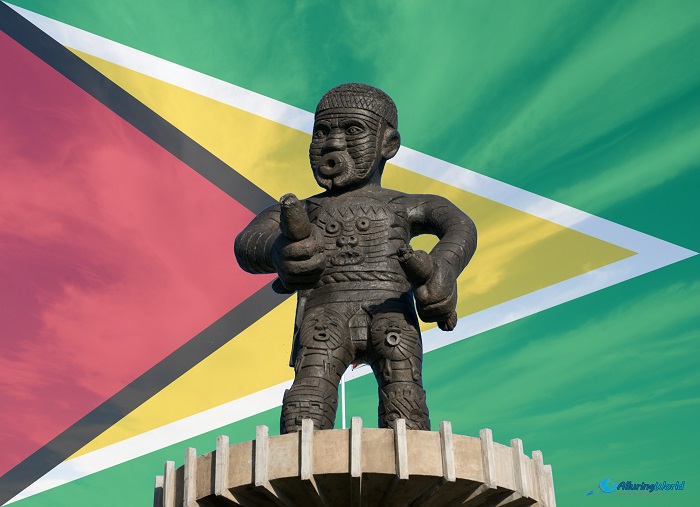
Nowadays, the statue raised in his memory stands 4.6 m (15 ft) tall and weighs some 2.5 tons. It was designed by the Guyanese sculptor Philip Moore and cast in sections in England by the Morris Singer Foundry. The entire sculpture rests on a plinth that is 5.5 m (18 ft) high which was designed by the architect Albert Rodrigues, and some symbols have been cast on the body of Cuffy.
As each symbol has a different meaning, his putting mouth is a sign of defiance, the face on his chest is a symbolic breastplate that gives protection in battle, and the horned faces on his thighs represent the many Guyanese revolutionaries throughout the years. There is a pig and dog in his hands, with the pig representing ignorance, and the dog representing covetousness and greed. All in all, this amazing historic symbolism is something that cannot be found in other sculptures, and that is why the 1763 Monument is considered to be one of the greatest landmarks of the small South American nation.

